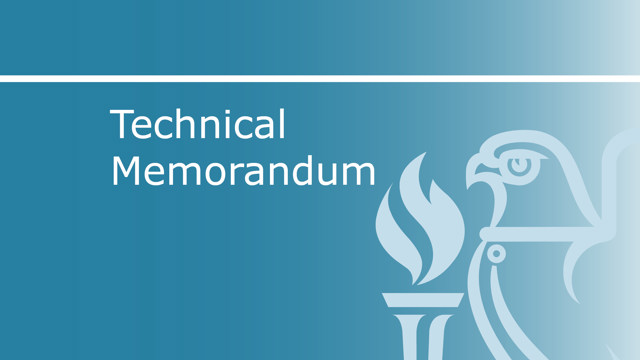
Embodied carbon in building services: A calculation methodology (TM65) outlines the need for assessment of embodied carbon of products linked to building services engineering systems, to increase knowledge and facilitate research related to whole life carbon. In this document, embodied carbon is understood as the greenhouse gas emissions associated with the manufacture of a product, its installation, maintenance, repair, replacement, and end of life. It covers the whole life cycle, excluding operational aspects and the potential recovery, reuse or recycling of materials. The embodied carbon associated with building services design can be significant over a building's lifetime, due to the materials used and high replacement rates.
This document provides guidance on how to use environmental product declarations (EPDs) to assess the embodied carbon of building services equipment; and where EPDs are not available, it provides guidance on how to estimate the embodied carbon.
The purpose of this guide is to help the industry take a first step together to evaluate embodied carbon emissions in building services design, alongside operational carbon emissions. The intention is for consultants and engineers to feed their findings back to CIBSE, enabling us to create rule of thumb guidance and to develop an embodied carbon product database - and allowing us to iterate, and further develop the CIBSE embodied carbon methodology.
To hear more about the embodied carbon methodology from the authors, see the TM65 launch webinar here:
#GrowYourKnowledge - Embodied carbon in building services: A calculation methodology (TM65)
The CIBSE embodied carbon methodology now includes several publications, digital tools, and free-to-all data-gathering forms. All of these can be accessed from www.cibse.org/tm65.
Contents
1 Introduction
1.1 Context
1.2 Aim of this document
1.3 Scope of this document
1.4 How to use this document
1.5 Definitions
1.5.1 Abbreviations
1.5.2 General definitions
1.5.3 Life cycle stage modules
1.5.4 Carbon definitions
1.6 Embodied carbon impact in MEP design
2 MEP embodied carbon reductions
2.1 Embodied carbon reductions: basic actions
2.2 Circular economy principles
2.3 Low embodied carbon materials
2.4 Refrigerant leakage mitigation
3 Environmental product declaration (EPD)
3.1 What is an EPD?
3.2 How to use an EPD?
3.3 Lack of EPDs for MEP products
4 Embodied carbon calculation methods
4.1 Introduction
4.1.1 Two calculation methods
4.1.2 Calculation process workflow
4.1.3 Relationship to RIBA Plan of Work stages
4.2 The ‘basic’ calculation method
4.2.1 Manufacturer information
4.2.2 Method
4.2.3 Product complexity
4.2.4 Refrigerant emissions
4.2.5 Reporting
4.3 The ‘mid-level’ calculation method
4.3.1 Manufacturer information
4.3.2 Method
4.3.3 Assumptions to be used in the ‘mid-level’ calculation method
4.3.4 Reporting
4.4 Applicability of method and assumptions for projects outside of the UK and Europe
4.4.1 Material carbon coefficient: A1
4.4.2 Transport to site: A4
4.4.3 Disposal: C2, C4
5 Worked examples
5.1 ‘Basic’ calculation method
5.1.1 Data requirements
5.1.2 Example calculation
5.2 ‘Mid-level’ calculation method
5.2.1 Data requirements
5.2.2 Example calculation
6 Extension of the method for advanced users
6.1 Creating generic data
7 How to move forward
7.1 How to move forward with whole life carbon in MEP design
7.1.1 Next steps
7.2 Considerations beyond whole life carbon
7.2.1 Next steps
Appendix A: Further information on EPDs and other MEP embodied carbon data
A.1 Environmental product declarations (EPDs)
A.1.1 Different types of EPDs
A.1.2 Steps taken to create an EPD
A.1.3 Environmental impacts captured in an EPD
A.1.4 EPD standards
A.1.5 Requirement for EPD comparison
A.1.6 Where to find EPDs for MEP products
A.1.7 Example EPD
A.2 Other embodied carbon data for MEP products
Appendix B: Manufacturer data collection
B.1 Manufacturer data collection
B.1.1 Section A: Essential information
B.1.2 Section B: Additional information required for ‘mid-level’ calculation
B.1.3 Section C: Further information
B.1.4 Section D: Information disclosure
B.2 ‘Manufacturer’ form
Appendix C: Differences between an EPD and the CIBSE calculation methods
C.1 Summary table
C.2 Relationship to RIBA Plan of Work stages
C.3 Further information on embodied carbon coefficients
Appendix D: Evidence base
D.1 Why two calculation methods were developed
D.2 The use of EPDs within the development of the methods
D.3 The ‘basic’ calculation method
D.3.1 Research showing that majority of embodied carbon is associated with stage A1 (material extraction)
D.3.2 Factors that are used in the ‘basic’ calculation method
D.3.3 Sense checking ‘basic’ calculation with EPDs
D.4 The ‘mid-level’ calculation method
D.4.1 Life cycle stages
D.4.2 Exclusions from the ‘mid-level’ calculation method
D.5 Refrigerant leakage assumptions in both methods
Removable summary of ‘basic’ calculation method
Removable summary of ‘mid-level’ calculation method
Authors: Louise Hamot and Clara Bagenal George, Elementa Consulting Ltd.
Contributors: George Adams (SPIE), Jane Anderson (ConstructionLCA Ltd.), Tom Bunn (Arup), Duncan Cox (Thornton Tomasetti), Simon Ebbatson (Elementa Consulting Ltd.), Pat Hermon, Roger Hitchin, Helen Hough (Bryden Wood), Johanna Jarvinen (Bionova Ltd./One Click LCA), Anna Lasso (UL), Dr Qian Li (Cundall), Athina Papakosta (SCS Railways), Alex Pepper (Elementa Consulting Ltd.), Ina Peukes (Resource Efficient Built Environment Lab (REBEL), Edinburgh Napier University), Dr Barbara Rodriguez Droguett (Carbon Leadership Forum), Michelle Sanchez Brajkovic (PDP Architects), Dr Yair Schwartz (University College London (UCL)), Simon Sturgis (Targeting Zero), Sebastian Theien (TH K.ln — University of Applied Sciences, Institute of Building Services Engineering), Dr Joe Jack Williams (Feilden Clegg Bradley Studios).
Peer Reviewers: Dr Francesco Pomponi (Resource Efficient Built Environment Lab (REBEL), Edinburgh Napier University); Dr Julie Godefroy (Julie Godefroy Sustainability) and Simon Wyatt (Cundall).
To find out more about the TM65 authors, see the CIBSE Knowledge Interview